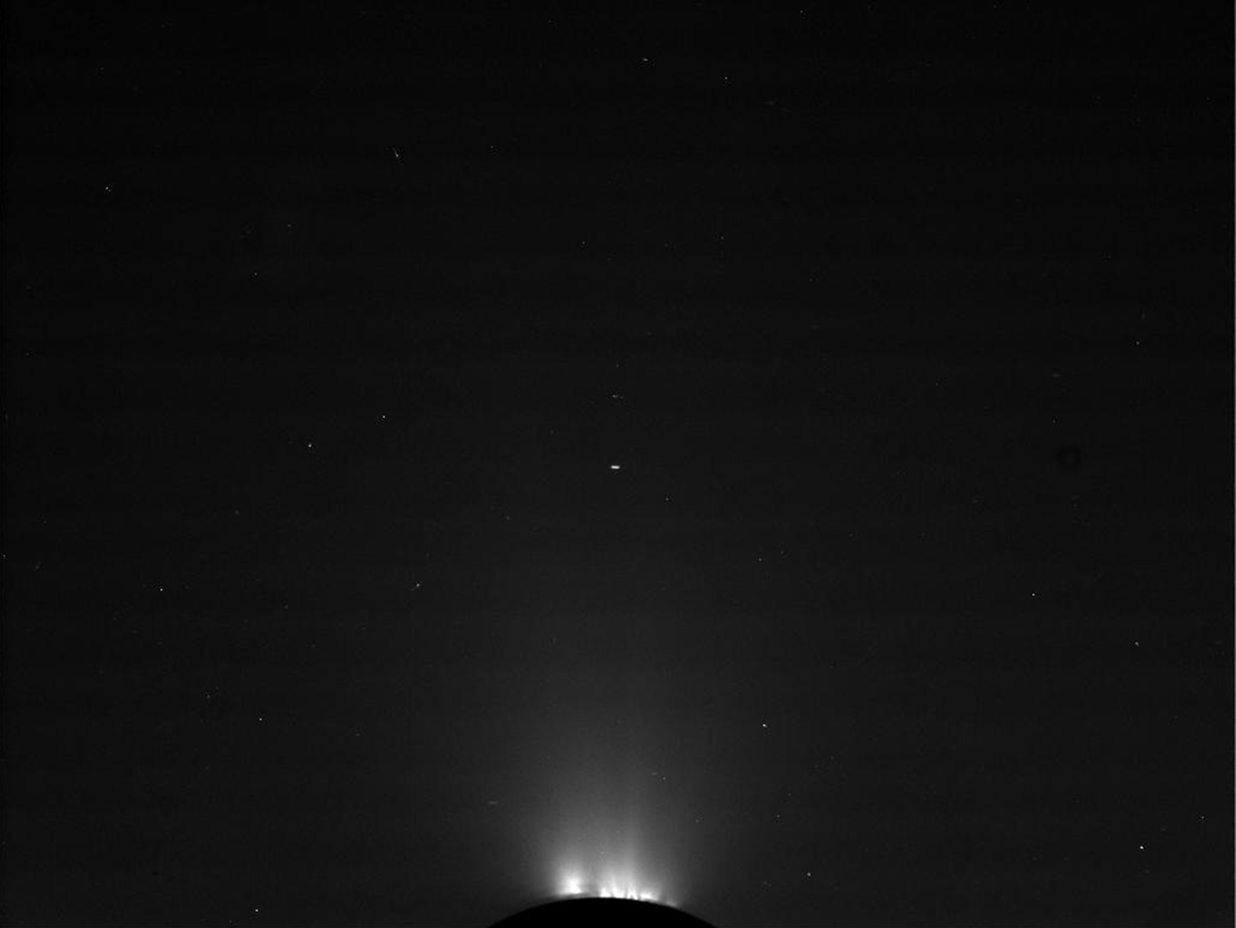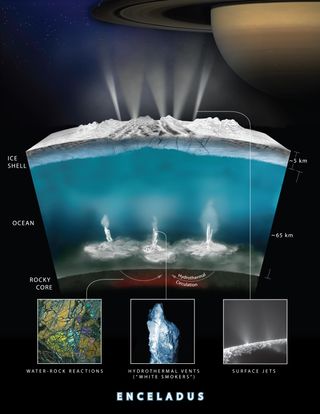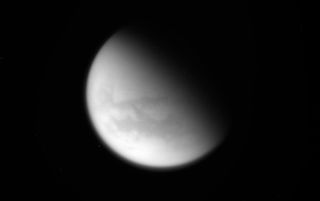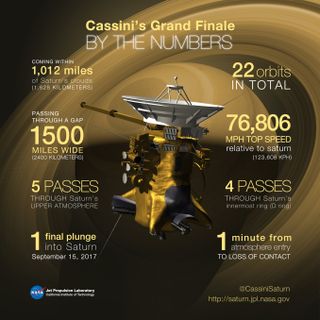After 13 Lucky Years At Saturn, Cassini's Mission Comes to An End

In October 1997, the Cassini spacecraft blasted off to explore Saturn and drop a probe onto its moon Titan. Then, something unusual happened. What was meant to be a four-year mission was extended almost a decade beyond its original end-date. As we approach the end of Cassini's 13 years of continuous presence in the Saturnian system, it has become clear that these were some of the luckiest years in the history of astrobiology.
During this epoch of exploration, unparalleled discoveries regarding life-in-the-universe were made, including what NASA's head of planetary science Jim Green called "the two ends of the spectrum in the search for life."
On one end of the spectrum lies Enceladus: a small, highly-reflective moon that has been much in the news after all of the necessary ingredients for life were detected in plumes shooting out of its southern pole. Cassini's serendipitous initial discovery of these plumes took place during a flyby 2005. Since then, dozens of flybys and studies by the Hubble Space Telescope helped confirm that the icy moon's heated interior is being continually ejected miles into space. [NASA's Epic Cassini Mission to Saturn — and its Grand Finale (Video)]
Subsequent sampling by Cassini has led researchers to conclude that, while they couldn't directly detect exo-life on Enceladus, between the chemical heating and the available nutrients, there was good evidence that any Earth-like microbes living there have more than enough to survive.
"Enceladus has the conditions most like what we think reside in our deep ocean," said Green in an interview with Astrobiology Magazine. "There may be life there — perhaps like life we've seen on Earth."

At the other end of the spectrum, but just around the corner in terms of the solar system, lies another potentially habitable environment: Titan. Green described Titan, the second largest moon in the solar system, as having methane rain and giant hydrocarbon lakes of unmapped depth. Unlike the kind of exo-life astrobiologists envision under the ice shell of Enceladus, life on Titan would be totally unlike any we have ever seen before.

Finding that Titan is host to so many rich and potentially life-supporting features was also largely coincidental. Because of its size (it's larger than the planet Mercury) Titan was essential to successfully steering Cassini's orbit around Saturn while keeping fuel consumption at a minimum. The resulting flybys of the largest moon in the Saturnian system, not to mention the solar system, provided repeated, detailed views of its thick nitrogen atmosphere, its cycle of precipitation and evaporation, and its lakes and clouds.
Get the Space.com Newsletter
Breaking space news, the latest updates on rocket launches, skywatching events and more!
Last month, Cassini wrapped up its 127th flyby of Titan with a radar-intense deep-dive. The radar aimed at Titan's northern hemisphere acted as a kind of sonar. Green explained, "When we hit a lake with radar, nearly all the signal is reflected off of it — but not all of it. Some of it goes all the way to the bottom, reflects, and comes back. We can use this data to determine the depth."
Previous flybys using this method have revealed that the methane and ethane lakes on Titan are more than 200 meters deep in some places. With this final flyby, we have gazed more deeply into those distant lakes and oceans than ever before, mapping Titan's moving shoreline with as much detail as possible before Cassini's final, fateful tumble into Saturn's crushing atmosphere in September. Between now and then, the spacecraft will slip in-between Saturn's rings. By pointing its radio dish towards Earth and sending signals as it moves closer and closer to the gas giant, Cassini will to try and solve a long-time mystery: What is the size of Saturn's core? It will also explore the size and shape of Saturn's magnetic field, which has, to date, only been measured from outside of Saturn's rings.

In 2004, when Cassini first arrived at its destination, no one, not even NASA, predicted that such good evidence of life would be captured on Enceladus, or that Titan would rise as an alternate model for habitability. Now, as Cassini's Grand Finale began on April 23, scientists were wondering how quickly we can return to these complex ecosystems and gather evidence that life is teaming in Titan's lakes and under Enceladus' icy surface.
"If I had written it up in the early 2000's, it would have been science fiction," Green observed about how, nearly 20 years ago, neither body was bright on astrobiology's radar. "Now, the whole community is starting to think: How do we get back? And what do we do when we get there?"
This story was provided by Astrobiology Magazine, a web-based publication sponsored by the NASA astrobiology program. Follow Space.com @Spacedotcom, Facebook and Google+. Story posted on Space.com.
Join our Space Forums to keep talking space on the latest missions, night sky and more! And if you have a news tip, correction or comment, let us know at: community@space.com.













